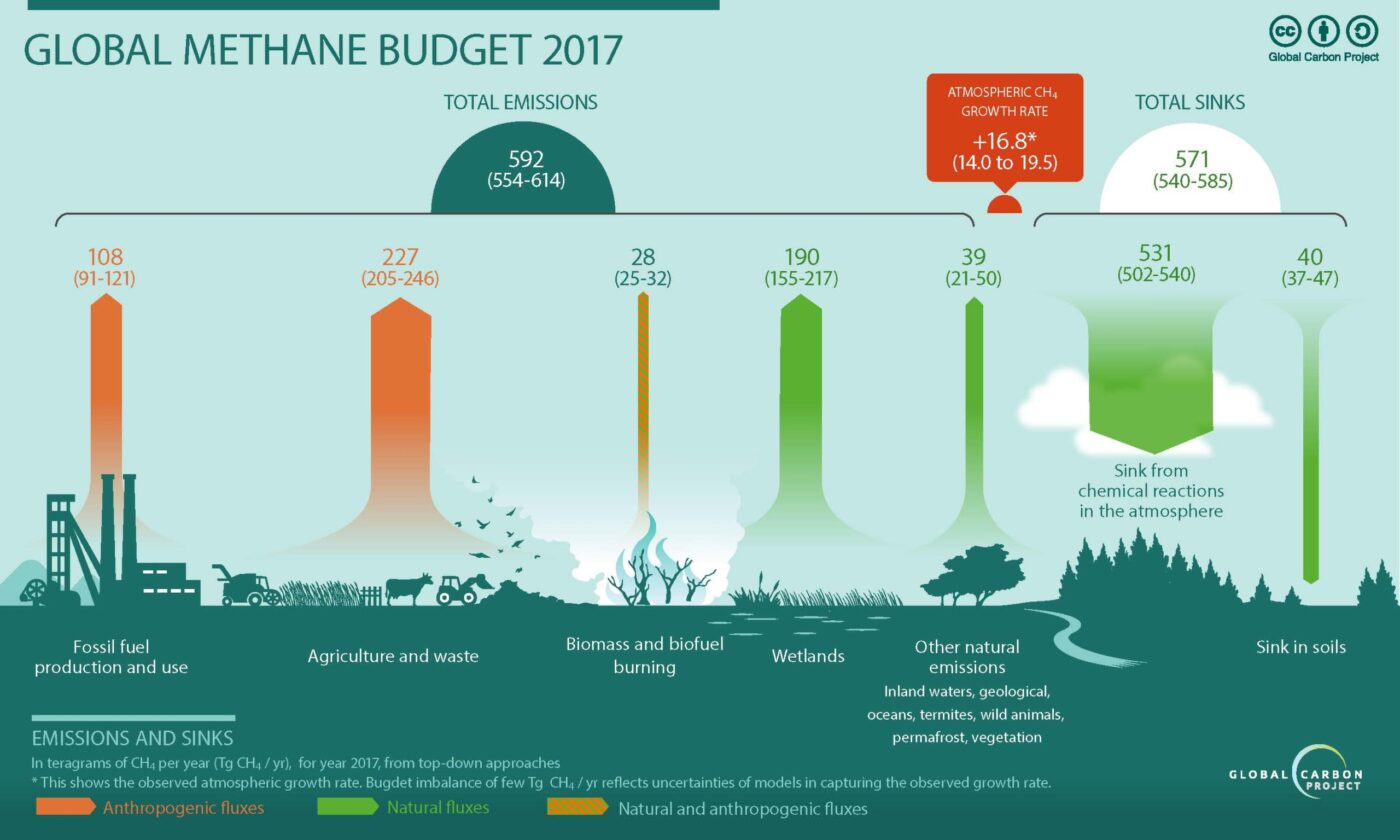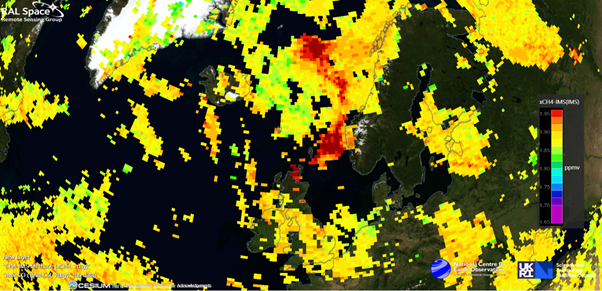
Methane
Methane’s short-term impact on the atmosphere is much stronger than carbon dioxide. Our research focuses on monitoring natural and anthropogenic emissions of methane and the affect it has on atmospheric composition.
Methane is a powerful greenhouse gas emitted to the atmosphere via human-related activity and natural sources. It warms the Earth’s climate 80 times more powerfully than carbon dioxide, although it remains in the atmosphere for a much shorter time (around 10 years).
Changes in atmospheric methane can be caused by changes in surface emissions or atmospheric chemistry. Emission sources are from human activity (e.g. agriculture and fossil fuel combustion) and from the natural world (e.g. wetlands).
Studying atmospheric methane is crucial for understanding and addressing climate change. As a potent greenhouse gas, methane significantly influences global warming. Identifying its sources, trends, and interactions helps develop effective mitigation strategies, contributing to climate resilience and sustainable environmental management.

(Credit: Jackson et al. 2020, Environmental Research Letters).
Satellite observation is critical to understand the rapid changes in atmospheric methane. Identifying its sources, trends, and interactions helps develop effective mitigation strategies, contributing to climate resilience and sustainable environmental management.
At NCEO, our methane research programme includes:
Anthropogenic methane
Studying anthropogenic sources of methane is vital for mitigating climate change. Human activities, such as agriculture and fossil fuel extraction, significantly contribute to methane emissions. Identifying and understanding these sources is crucial for developing targeted strategies to reduce methane levels and curb its potent impact on global warming, fostering a more sustainable future. Read more….
Natural sources of methane
Natural sources of methane include wetlands, where microbial activity produces methane in waterlogged conditions. Additionally, methane arises from geological processes such as the decay of organic matter in anaerobic environments and the release of methane hydrates from the ocean floor. These natural emissions play a role in Earth’s carbon cycle. Read more…

Search datasets and tools
NCEO produces various datasets related to climate change, including measurements of greenhouse gases, atmospheric composition, land surface changes and ocean health. These datasets are valuable for understanding the dynamics of climate change on a global scale and informing policies and actions to address it.







